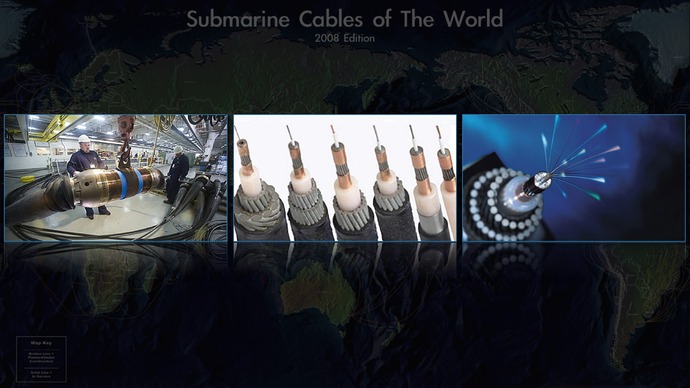Backbone Cable
The RSN will rely on the telecom industry standard sub-sea cable to provide power (10 kV DC, up to 8 A) and communications (10 Gb/s) via fiber-optics between the Primary Nodes and the Shore Station. These cables are routinely deployed across ocean basins and margins for long lifetimes; they generally become obsolete before they fail (see Wet Plant Primary Infrastructure White Paper, 2007). The backbone cable will be deployed using a cable industry cable-laying ship.
Backbone cables will run from the Shore Station to the Primary Nodes at Axial and Hydrate Ridge. Some of the Primary Nodes will be terminations, while others will pass power and bandwidth on to nodes further offshore, e.g. Primary Node 5 will send power and bandwidth on to Primary Node 3A. A backbone cable will also connect the Coastal Scale Nodes (CSN) Endurance Oregon Line to the RSN. Extension cables to Low Voltage and Medium Voltage Nodes are part of the Secondary Infrastructure. The selection of specific cable parameters is part of the Primary Infrastructure contract, therefore details will be available only after that contract’s design phase. L-3 Maripro was awarded the Primary Infrastructure contract in September 2009.
Extension Cables
Extension Cables provide power and communication links between the Primary Infrastructure, Secondary Infrastructure and instruments. Extension Cables link Primary Nodes to LV Nodes to J-Boxes, and to instruments across the RSN. This cabling may be installed in various seafloor conditions from harsh areas (sharp rocks, inside the caldera of an active undersea volcano, across an active fault line) to benign areas, and will be powering different types of loads, therefore different types of cables are necessary. Primary Nodes are set at depths down to ~3000 m and extension cables link to elements along the bottom and from the bottom to near the surface. The additional details are described in the RSN Secondary Infrastructure White_Paper, 2007. All extension cables have been documented in terms of their power/communications requirements, and in consideration of special environmental requirements. This includes various levels of armoring for deployments in volcanic areas such as the flanks and caldera of Axial Seamount. These are included in the block diagrams and budgeted appropriately.
Two fundamental characteristics of the OOI are the ability to expand the coverage area and number of sensors, and the ability to operate for over 25 years. To support this, ROV wet-mate connectors are used in many of the extension cable assemblies to allow for additional cables to be added to the system and for existing components to be temporarily removed from the system for maintenance.



